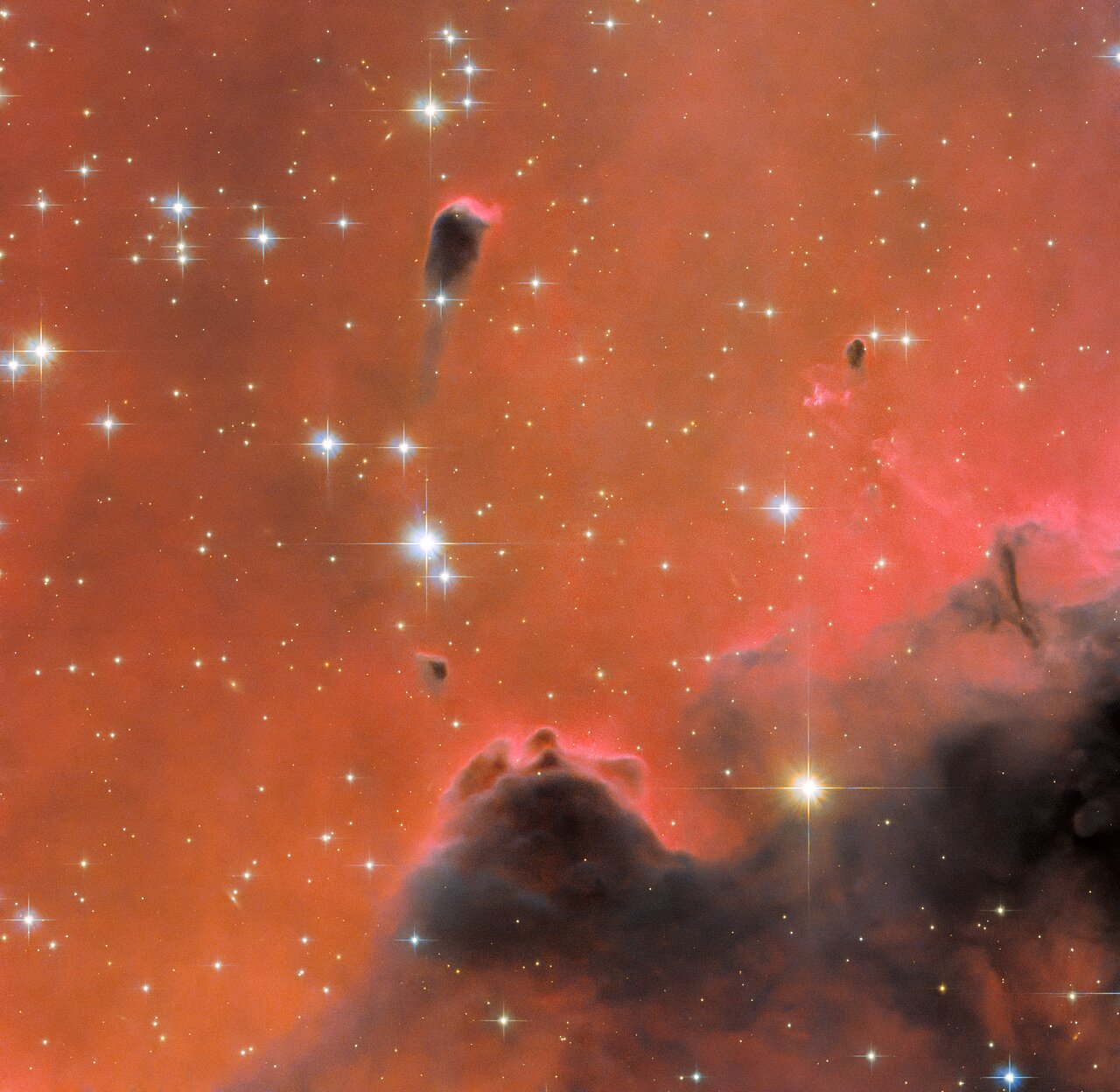Hubble Space Telescope captures stunning red view of the Soul Nebula
The holiday season may be over on Earth, but it never ends in Westerhout 5, also known as the Soul Nebula.
Holiday decorations may have come down already on Earth, but a nebula located 7,000 light-years away is keeping the festive spirit alive.
The Hubble Space Telescope captured a stunning image of a small region of Westerhout 5, also known as the Soul Nebula, glowing red. The suffusion of red light is caused by H-alpha emission, which happens when very energetic electrons within hydrogen atoms lose energy, causing the release of this distinctive red light, Hubble representatives wrote in a description of the image.
This red light also reveals a range of fascinating features, such as a so-called free-floating evaporating gaseous globule (frEGG). Seen as a dark, tadpole-shaped region in the upper center left of the image, this frEGG is officially named KAG2008 globule 13 and J025838.6+604259.
Related: The best Hubble Space Telescope images of all time!

This and other frEGGs belong to a special class of evaporating gaseous globules (EGGs), which occur in nebulas when energetic radiation from young, hot stars ionizes surrounding gas by stripping away electrons. This causes the gas to disperse away from those bright stars in a process called photoevaporation, which may help to halt star formation in nebulas.
In EGGs, the gas is so dense that this photoevaporation process happens much more slowly than it does in surrounding regions of gas. This slower photoevaporation and the protection of gas from dispersal allow gas to remain dense enough to collapse and form protostars, which eventually go on to become full-fledged stars. This means astronomers are interested in frEGGs and EGGs because they are the areas of nebulas where star birth may have once taken place.
Astronomers discovered the existence of EGGs only recently. A prominent example of these structures is located at the tips of the Pillars of Creation in a 1995 Hubble image of the nebula. frEGGs are an even newer find; they are distinct from EGGs because they are detached from surrounding gas, giving them a distinct tadpole-like shape.
Get the Space.com Newsletter
Breaking space news, the latest updates on rocket launches, skywatching events and more!
The Soul Nebula is the partner of another nebula that will have its image widely shared as Valentine's Day approaches: the Heart Nebula. Officially known as IC 1805, the massive cloud of gas and dust is so named because the glowing hydrogen content makes it resemble a pink heart. At 7,500 light-years away, the Heart Nebula can be snapped by amateur astrophotographers, making it one of the most commonly shared space images around Feb. 14.
The "Heart and Soul" nebula complex forms a vast star-forming region that spans 300 light-years, with the two nebulas joined by a bridge of gas. Both nebulas are packed with bright stars that are just a few million years old, veritable infants compared with our nearly 5 billion-year-old sun.
Follow us on Twitter @Spacedotcom or on Facebook.
Join our Space Forums to keep talking space on the latest missions, night sky and more! And if you have a news tip, correction or comment, let us know at: community@space.com.

Robert Lea is a science journalist in the U.K. whose articles have been published in Physics World, New Scientist, Astronomy Magazine, All About Space, Newsweek and ZME Science. He also writes about science communication for Elsevier and the European Journal of Physics. Rob holds a bachelor of science degree in physics and astronomy from the U.K.’s Open University. Follow him on Twitter @sciencef1rst.









